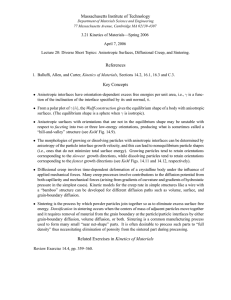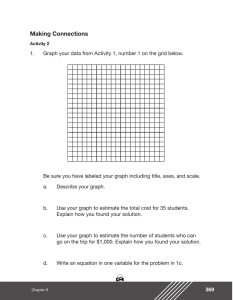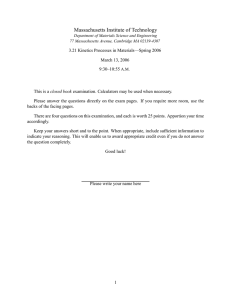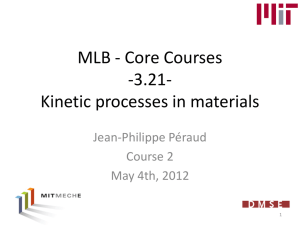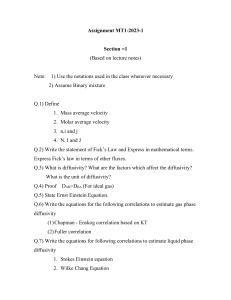Massachusetts Institute of Technology
advertisement
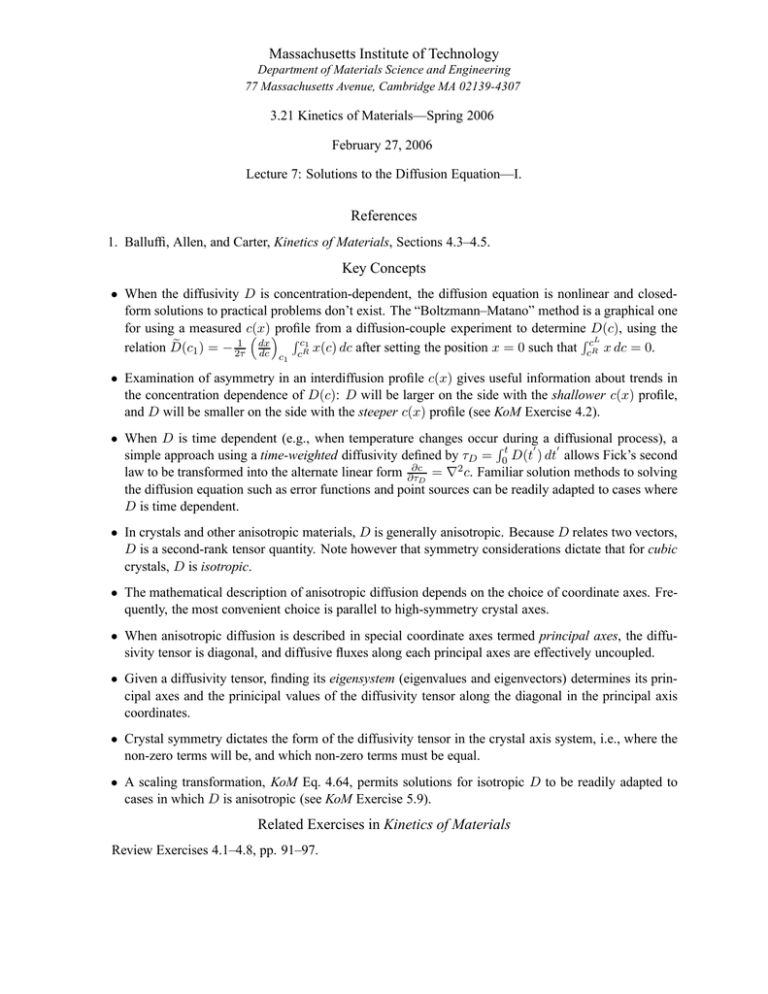
Massachusetts Institute of Technology Department of Materials Science and Engineering 77 Massachusetts Avenue, Cambridge MA 02139-4307 3.21 Kinetics of Materials—Spring 2006 February 27, 2006 Lecture 7: Solutions to the Diffusion Equation—I. References 1. Balluffi, Allen, and Carter, Kinetics of Materials, Sections 4.3–4.5. Key Concepts • When the diffusivity D is concentration-dependent, the diffusion equation is nonlinear and closedform solutions to practical problems don’t exist. The “Boltzmann–Matano” method is a graphical one for using a measured c(x) from a diffusion-couple experiment to determine D(c), using the � �profile � cL � c1 1 dx � relation D(c1 ) = − 2τ dc cR x(c) dc after setting the position x = 0 such that cR x dc = 0. c1 • Examination of asymmetry in an interdiffusion profile c(x) gives useful information about trends in the concentration dependence of D(c): D will be larger on the side with the shallower c(x) profile, and D will be smaller on the side with the steeper c(x) profile (see KoM Exercise 4.2). • When D is time dependent (e.g., when temperature changes occur� during a diffusional process), a ′ ′ simple approach using a time-weighted diffusivity defined by τD = 0t D(t ) dt allows Fick’s second law to be transformed into the alternate linear form ∂τ∂cD = ∇2 c. Familiar solution methods to solving the diffusion equation such as error functions and point sources can be readily adapted to cases where D is time dependent. • In crystals and other anisotropic materials, D is generally anisotropic. Because D relates two vectors, D is a second-rank tensor quantity. Note however that symmetry considerations dictate that for cubic crystals, D is isotropic. • The mathematical description of anisotropic diffusion depends on the choice of coordinate axes. Fre­ quently, the most convenient choice is parallel to high-symmetry crystal axes. • When anisotropic diffusion is described in special coordinate axes termed principal axes, the diffu­ sivity tensor is diagonal, and diffusive fluxes along each principal axes are effectively uncoupled. • Given a diffusivity tensor, finding its eigensystem (eigenvalues and eigenvectors) determines its prin­ cipal axes and the prinicipal values of the diffusivity tensor along the diagonal in the principal axis coordinates. • Crystal symmetry dictates the form of the diffusivity tensor in the crystal axis system, i.e., where the non-zero terms will be, and which non-zero terms must be equal. • A scaling transformation, KoM Eq. 4.64, permits solutions for isotropic D to be readily adapted to cases in which D is anisotropic (see KoM Exercise 5.9). Related Exercises in Kinetics of Materials Review Exercises 4.1–4.8, pp. 91–97.

